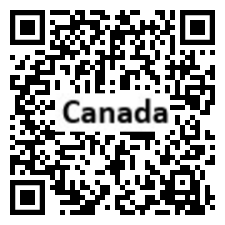Introduction
Background
Canada became a self-governing dominion in 1867, while retaining ties to the British crown. Canada aims to develop its diverse energy resources while maintaining its commitment to the environment.
Geography
Area
total: 9,984,670 sq km
land: 9,093,507 sq km
water: 891,163 sq km
Climate
varies from temperate in south to subarctic and arctic in north
Natural resources
bauxite, iron ore, nickel, zinc, copper, gold, lead, uranium, rare earth elements, molybdenum, potash, diamonds, silver, fish, timber, wildlife, coal, petroleum, natural gas, hydropower
People and Society
Population
38,516,736 (2023 est.)
Ethnic groups
Canadian 15.6%, English 14.7%, Scottish 12.1%, French 11%, Irish 12.1%, German 8.1%, Chinese 4.7%, Italian 4.3%, First Nations 1.7%, Indian 3.7%, Ukrainian 3.5%, Metis 1.5% (2021 est.)
Languages
English (official) 87.1%, French (official) 29.1%, Chinese languages 4.2%, Spanish 3.2%, Punjabi 2.6%, Arabic 2.4%, Tagalog 2.3%, Italian 1.5% (2022 est.)
Religions
Christian 53.3%, Muslim 4.9%, Hindu 2.3%, Sikh 2.1%, Buddhist 1%, Jewish 0.9%, Traditional (North American Indigenous) 0.2%, other religions and traditional spirituality 0.6%, none 34.6% (2021 est.)
Population growth rate
0.73% (2023 est.)
Government
Government type
federal parliamentary democracy (Parliament of Canada) under a constitutional monarchy; a Commonwealth realm; federal and state authorities and responsibilities regulated in constitution
Capital
name: Ottawa
Executive branch
chief of state: King CHARLES III (since 8 September 2022); represented by Governor General Mary SIMON (since 6 July 2021)
head of government: Prime Minister Justin Pierre James TRUDEAU (Liberal Party) (since 4 November 2015)
Legislative branch
description: bicameral Parliament or Parlement consists of:
Senate or Senat (105 seats; members appointed by the governor general on the advice of the prime minister and can serve until age 75)
House of Commons or Chambre des Communes (338 seats; members directly elected in single-seat constituencies by simple majority vote with terms up to 4 years)
Economy
Economic overview
one of the world’s largest economies; leading global financier and macroeconomic partner; largest US trading partner; key timber and oil and gas industries; Canada sends over half its development aid to the World Bank; key “blue economy” developer
Real GDP (purchasing power parity)
$1.832 trillion (2021 est.)
$1.752 trillion (2020 est.)
$1.849 trillion (2019 est.)
Real GDP per capita
$47,900 (2021 est.)
$46,100 (2020 est.)
$49,200 (2019 est.)
Agricultural products
wheat, rapeseed, maize, barley, milk, soybeans, potatoes, oats, peas, pork
Industries
transportation equipment, chemicals, processed and unprocessed minerals, food products, wood and paper products, fish products, petroleum, natural gas
Remittances
0.04% of GDP (2021 est.)
0.05% of GDP (2020 est.)
0.08% of GDP (2019 est.)
Exports
$611.146 billion (2021 est.)
$484.226 billion (2020 est.)
$561.63 billion (2019 est.)
Exports - partners
US 73% (2019)
Exports - commodities
crude petroleum, cars and vehicle parts, natural gas, gold, lumber (2021)
Imports
$609.256 billion (2021 est.)
$517.964 billion (2020 est.)
$589.037 billion (2019 est.)
Imports - partners
US 57%, China 11%, Mexico 5% (2019)
Imports - commodities
cars and vehicle parts, delivery trucks, crude petroleum, refined petroleum (2019)
Exchange rates
Canadian dollars (CAD) per US dollar -
Exchange rates:
1.254 (2021 est.)
1.341 (2020 est.)
1.327 (2019 est.)
1.296 (2018 est.)
1.298 (2017 est.)
Page last updated: Thursday, December 14, 2023
